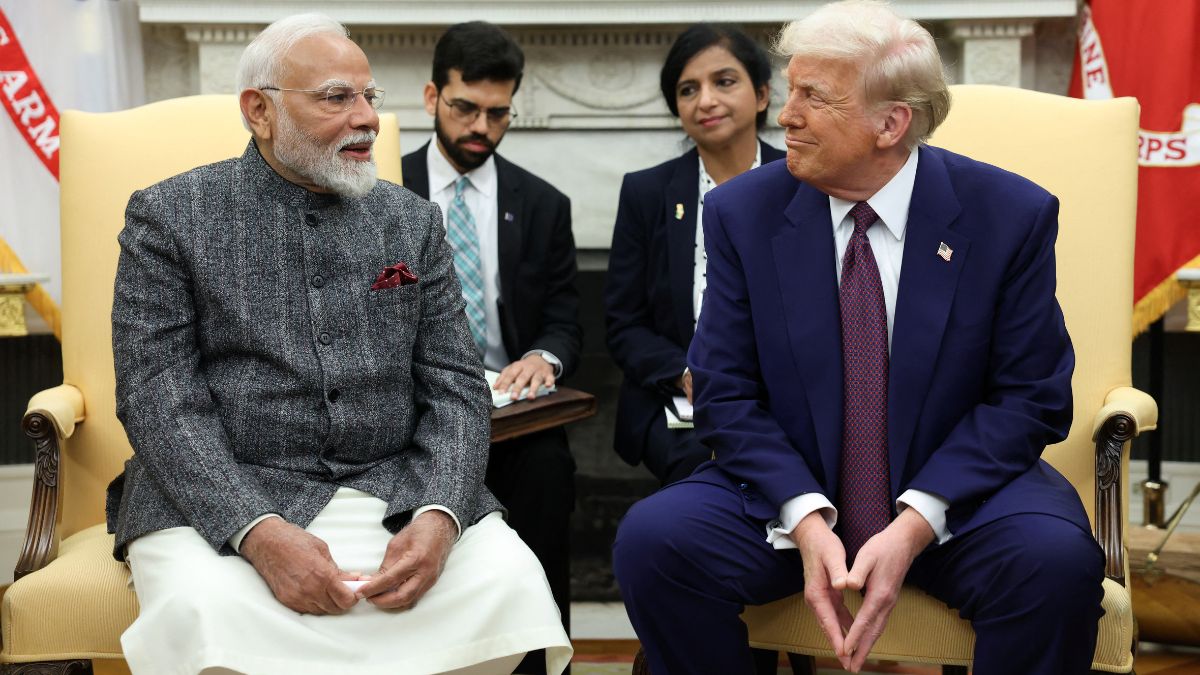In a dramatic escalation of trade tensions, US President Donald Trump has imposed punitive tariffs of 50 per cent on Indian imports — doubling the rate from the earlier 25 per cent. The executive order, signed in early August 2025, directly targets India’s continued purchase — and re-export — of Russian crude oil, which Washington claims is indirectly funding Moscow’s ongoing war in Ukraine.
This decision marks a significant moment in global economics and diplomacy, entangling energy geopolitics with trade warfare. The implications will be long-lasting — not just for Indian exporters, but also for competitor nations poised to benefit from India’s sudden loss of competitiveness in the US market.
What prompted the tariff hike?
According to the order, the Trump administration considers India’s prolonged Russian oil imports a “threat to the national security and foreign policy of the United States”. Despite pressure from both Democratic and Republican lawmakers , India has held firm, arguing that affordable energy is a non-negotiable priority for a developing economy.
Follow our live coverage of US President Donald Trump’s tariffs on India hereThe tariffs are being presented as a tool to deter Indian firms —particularly refiners and intermediaries— from continued energy ties with Russia. New Delhi, in turn, has labelled the move an “unfair and unprovoked economic penalty”, signalling possible retaliatory action under World Trade Organization mechanisms.
Major Indian sectors affected by Trump’s tariffs
The broad-based 50 per cent tariffs affect a wide range of Indian exports, with consequences expected across:
Textiles and garments
Gems and jewellery
Automotive components and vehicles
Leather goods
Machinery and engineering products
Marine and seafood products
Steel and aluminium
Chemicals and agrochemicals
Selective pharmaceutical and processed goods
Exporters in these sectors now find themselves priced out of the American market, losing a competitive edge to rivals that face significantly lower import duties. Some analysts predict that Indian exports in the affected industries could shrink by up to 45 per cent, representing an annual loss of between $35 billion and $45 billion.
Who benefits at India’s expense?
As India falls behind due to steep tariffs, multiple countries stand ready to fill the vacuum. The following nations are poised to gain the most, sector by sector:
1. Textiles and apparel
Winners: Vietnam, Bangladesh, Cambodia, Mexico, Pakistan, Turkey
Why: Countries like Vietnam face US tariffs of just 12–20 per cent, compared to India’s 50 per cent. They are likely to capture substantial market share, particularly in cheap cotton-based garments and synthetic fibres.
2. Gems and jewellery
Winners: Belgium, Israel, UAE, Thailand, China
Why: Indian diamonds often dominated the US import pipeline. These competitors, many of whom face tariffs of under 10 per cent, will likely absorb up to $2–3 billion of lost Indian jewellery trade.
3. Automobiles and components
Winners: Mexico, Canada, South Korea, Japan, Thailand
Why: Free trade agreements offer favourable terms for Mexico and Canada. With India’s costs doubled, these markets look increasingly attractive to US manufacturers.
4. Leather goods and footwear
Winners: Vietnam, Bangladesh, China, Italy
Why: India’s exporters face tariffs of 50 per cent, while rivals continue to pay less than 15 per cent. US buyers are expected to pivot accordingly.
Impact Shorts
More Shorts5. Engineering goods and machinery
Winners: Germany, South Korea, China, Japan
Why: As Indian machinery losses mount, countries with established industrial supply chains will step into the breach.
6. Chemicals and agrochemicals
Winners: EU nations, China, Brazil
Why: Disruptions in chemical exports from India create openings for existing suppliers familiar to US agricultural sectors.
7. Marine products
Winners: Vietnam, Indonesia, Ecuador
Why: India is the second-largest shrimp exporter to the US; its loss is Vietnam and Ecuador’s gain.
Quantifying the trade shifts
| Sector | Expected loss to India | Projected gains to rivals |
|---|---|---|
| Textiles & apparel | $10–12 billion | Vietnam, Bangladesh, Mexico (~$8–9 billion) |
| Jewellery & gems | $2–3 billion | Israel, UAE, Thailand (up to $2 billion) |
| Auto & components | $1.5–2 billion | Mexico, South Korea (~$1.7 billion) |
| Leather & footwear | $1 billion+ | Vietnam, Bangladesh (~$750 million) |
| Marine products | $1.2–1.5 billion | Vietnam, Ecuador (~$1 billion) |
| Engineering goods | $2.5 billion+ | Germany, Japan (~$2 billion) |
There may be strategic and political fallout
Trump’s tariffs threaten to unwind portions of the US–India strategic partnership — a relationship cultivated over two decades across defence, technology, and energy sectors. While India’s independent energy policy remains domestically popular, prolonged economic pressure may ultimately push it to rethink its sourcing strategy or seek new trade alignments.
From Washington’s viewpoint, the move reflects President Trump’s return to leveraging economic instruments as geopolitical tools, echoing his administration’s first-term tactics against China, the EU, and other trade partners.
A global economic tipping point
Trump’s tariff offensive has jolted global markets. At 50 per cent, it is one of the highest ever imposed by the US on a major trading partner. As Indian exporters scramble, countries like Vietnam, Mexico, and Germany are gearing up to absorb lost volumes.
In today’s fragmented economy, tariffs are no longer just taxes — they are weapons. And right now, India is caught in the crosshairs.
)